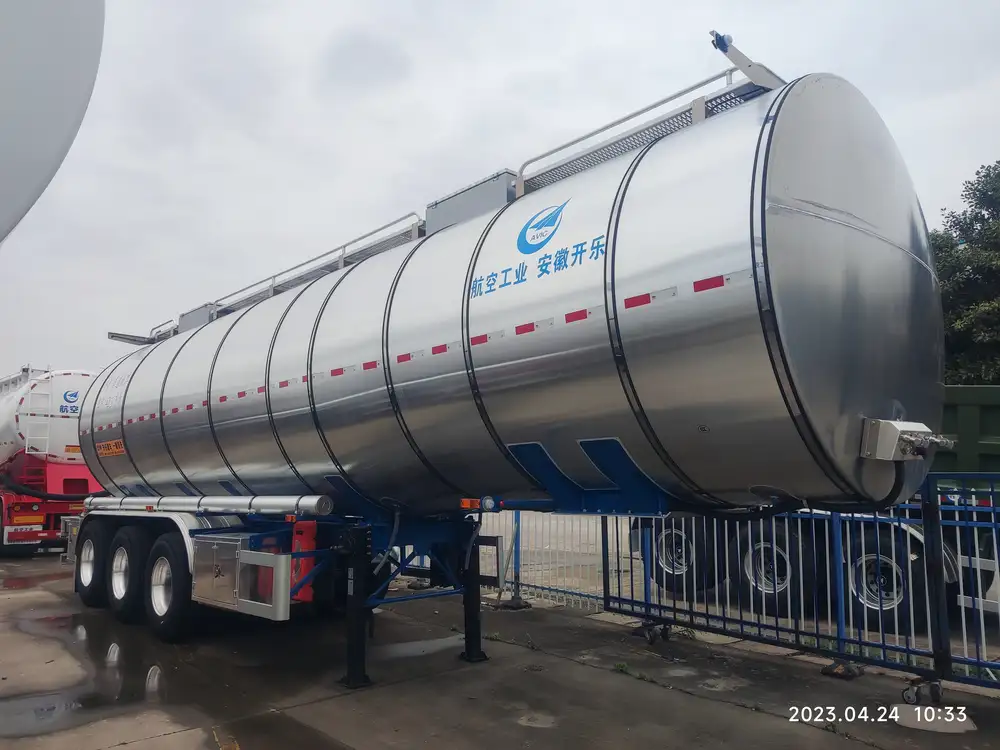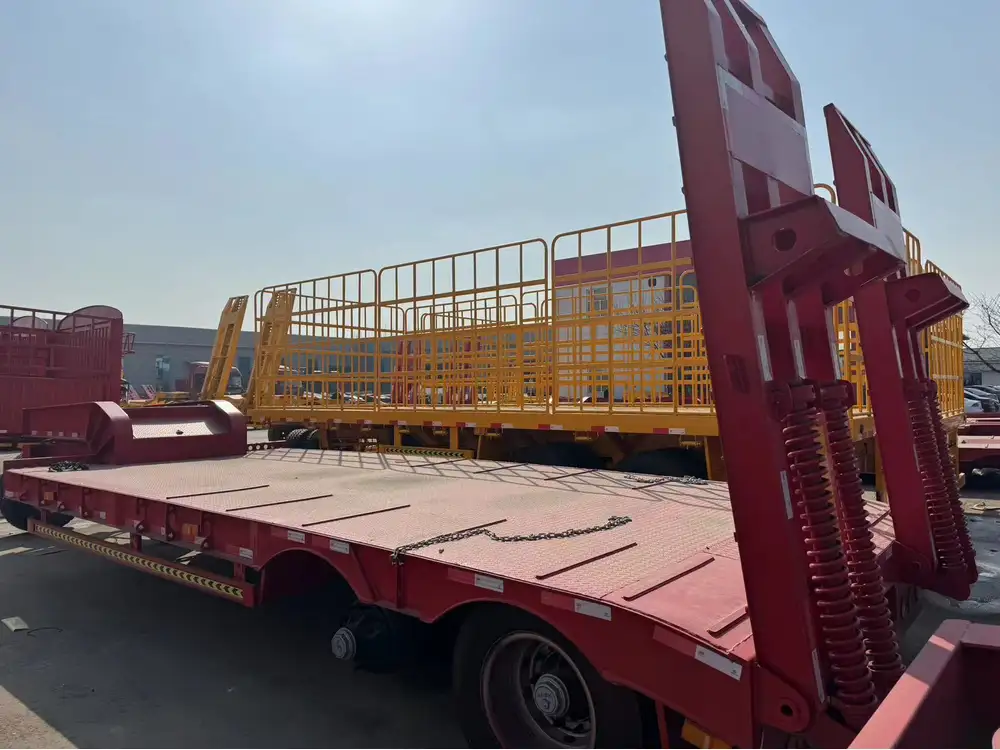Tank trailers are vital components in the transportation of bulk liquids, ranging from fuels to chemicals. Their design and capacity play a significant role in determining how efficiently goods can be transported. In this article, we will delve into the specifics of tank trailer capacities, addressing the common query of how many gallons fit in a tank trailer while analyzing various types, factors influencing capacity, and best practices for usage.
The Basics of Tank Trailers
What is a Tank Trailer?
A tank trailer is a specialized type of trailer designed for transporting liquids. These trailers come in various configurations, depending on the liquid being transported. Some common applications include:
- Fuel Transportation: Gasoline, diesel, and other fuels are commonly transported using tank trailers.
- Chemical Transport: Various chemicals, including solvents, acids, and bases, require specialized trailers for safe transport.
- Food-Grade Liquids: Tankers are also used for transporting food-grade liquids like oils and syrups.

Types of Tank Trailers
Tank trailers can be categorized based on their construction and intended use. The most common types include:
| Tank Trailer Type | Description |
|---|---|
| Single Compartment | One chamber for carrying a single liquid type. |
| Multi-Compartment | Divided into several compartments, allowing for multiple liquid types. |
| Insulated Tankers | Equipped with insulation for maintaining temperature-sensitive liquids. |
| Pressure Tankers | Designed to transport gases and liquids under pressure. |
Capacity Considerations: How Many Gallons?
Standard Capacities
Tank trailers come in various sizes, but there are standard capacities that are commonly found in the industry. It’s essential to understand these sizes when determining the capacity in gallons. A typical tank trailer’s capacity can range between 3,000 to 10,000 gallons, with some specialized tankers capable of hauling up to 11,600 gallons.

Common Gallon Capacities of Tank Trailers
| Trailer Size | Typical Capacity (Gallons) | Common Uses |
|---|---|---|
| 3,000 gallons | 3,000 | Chemical transport |
| 5,000 gallons | 5,000 | Food-grade liquids |
| 7,000 gallons | 7,000 | Fuel transportation |
| 10,000 gallons | 10,000 | Large chemical shipments |
| 11,600 gallons | 11,600 | Special fuel applications |
Factors Influencing Capacity
Several factors can influence how many gallons fit in a tank trailer, including:
- Physical Dimensions: The length, width, and height of the trailer substantially determine its overall volume and, consequently, its capacity.
- Shape of the Tank: The cylindrical design offers maximum volume efficiency, while tanks with multiple compartments may provide reduced capacity due to structural separators.
- Material of Construction: Stainless steel, aluminum, and carbon steel are common materials, each affecting the weight and operational capacity of the trailer.
- Regulatory Restrictions: Certain jurisdictions impose weight limits along with volume limits, so understanding both is critical for compliance.
Calculating Tank Trailer Capacity
To accurately determine how many gallons fit in a tank trailer, one must know the internal dimensions of the tank and the formula for converting cubic volume to gallons.

Volume Calculation Formula
The general formula to calculate the volume of a cylindrical tank is as follows:
[ \text{Volume (cubic feet)} = \pi \times \left( \frac{d}{2} \right)^2 \times h ]Where:
- ( \pi ) ≈ 3.14159
- ( d ) = diameter of the tank (in feet)
- ( h ) = height of the tank (in feet)
To convert cubic feet to gallons:
[ \text{Gallons} = \text{Volume (cubic feet)} \times 7.48 ]Example Calculation
- Assume a tank trailer with a diameter of 8 feet and a height of 30 feet:
- Volume (cubic feet) = ( 3.14159 \times \left( \frac{8}{2} \right)^2 \times 30 = 603.24 \text{ cubic feet} )
- Gallons = ( 603.24 \times 7.48 \approx 4,505.6 \text{ gallons} )
This example shows how precise measurements and calculations can determine the capacity of tank trailers.
Safety and Best Practices for Tank Trailers

Loading and Unloading Procedures
Loading and unloading liquids from tank trailers can be risky if not performed correctly. It is imperative to follow proper safety protocols:
- Use of PPE: Personal protective equipment (PPE) should be worn by operators.
- Inspection: Always inspect the tank and connections before loading.
- Grounding: Ensure static electricity is managed by grounding the tanker to prevent ignition during fuel loading or unloading.
Maintenance of Tank Trailers
Regular maintenance is not just a legal requirement but also contributes to the safety and longevity of tank trailers. Consider the following:
- Routine Inspections: Check for leaks, corrosion, and structural integrity.
- Cleaning: Regularly clean tank interiors to avoid contamination.
- Tire and Brake Checks: Ensure tires are properly inflated, and brakes are functional to avoid equipment failures.
Regulatory Compliance
Adhering to regulations is crucial. Different regions have specific rules governing transporting hazardous materials, and it’s essential to stay compliant to prevent legal issues and ensure safety.

Conclusion: The Importance of Understanding Tank Trailer Capacity
Understanding how many gallons fit in a tank trailer is more than answering a simple question; it is vital for efficient planning, compliance with regulations, and optimizing logistical operations. Knowledge of capacity, factors influencing it, and effective safety practices support manufacturers and operators in maximizing their operational efficiency while safeguarding against risks.
Incorporating these insights ensures that businesses can make informed decisions, mitigate risks, and maintain high standards of safety and compliance in their operations. As the industry advances, these principles will remain foundational for successful operations in the transportation sector.
For any manufacturer or operator involved in tank trailer logistics, being well-versed in these aspects not only streamlines operations but also enhances profitability and safety in an increasingly complex environment.



